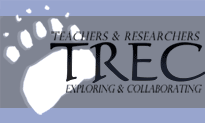 |
|
|
| Author |
Message |
Kathleen_Wright
Joined: 23 Mar 2004
Posts: 5

|
 Posted:
Mon Jun 28, 2004 6:08 pm Posted:
Mon Jun 28, 2004 6:08 pm |
  |
Journal: Day 1: Biology Lab, University of Alaska at Fairbanks 10:00 am 5/26/04
I meet Carlos and his student, Casey. The three of us will be collecting organism samples from streams at the Caribou Poker Creek sites and bringing them back to this lab for sorting and identification. Today is dedicated to setting up the lab and checking the equipment with a dry run/training session.
I find that we will be sampling at 6 sites and at each of the sites there will be 3 replicates. There are 3 chores. One person is in charge of the kick net, holding it about a foot away from the second person’s feet, while this second person does a twist and shuffle upstream to dislodge the insects. The third person is collecting and notating environmental data. I will have a chance to do each of the jobs so today will include a brief training session. Casey has worked with Carlos before and is familiar with the procedures.
I feel like one of his students as Carlos begins with an informative talk on the area where we will be collecting. He explains that a stream has pools, runs (which are straight and smooth and the water on top runs swiftly), and riffles. We will be collecting at sites where there are riffles because that is where you find the highest levels of oxygen and therefore a higher community structure. We will use instruments to measure conductivity, ph, and dissolved oxygen levels at our sites.
We’ll return to this lab to analyze the samples collected. Carlos has set up a picking/ sorting station in the lab and explains the sample sorting procedure. The detritus is spread evenly over a tray which has been gridded into 24 equal squares. Using a random number generator, one of the squares is chosen as a starting point. You start picking all the organisms from this square and continue to the next square until you have sorted 300! He said that it could take a whole day to pick one tray (these trays are cafeteria size so you can get an idea of the fastidiousness of the work involved!). Categories I noticed include: beetle, caddis fly, dragon fly, fly, mayfly, and stonefly. Carlos uses a protocol developed in Vermont for indirect discharge where permits are required to show that discharge is not impacting the stream ecology.
Casey and I set up our picking/;sorting stations then attempt to calibrate the probe which will measure ph, conductivity, and dissolved oxygen only to find that we need a fine hex wrench…added to the shopping list.
After lunch , we prepare equipment for a test run. I suggest that we head out Chena Hot Springs Road to find a stream. 
See album for additional photos. http://archive.arcus.org/TREC/phpbb/album_cat.php?cat_id=2
I learn to handle the kick net and watch as Carlos demonstrates the procedure for transferring detritus and using the sieve bucket. Casey checks the monitoring instrument for water quality data and we complete a data record sheet.
Back to campus for a quick GPS lesson and I feel confident that we will have a productive day in the field on Monday.
Impressions on this first day: Going into this I was apprehensive about working with Carl…not about working with him as an individual because he seemed like a friendly guy from his emails…but about working with him as a scientist. I hoped he was not expecting too much training in his field. When I got the project outline and procedure sheets I was daunted by the verbiage. But I find that he explains things very thoroughly and after setting up my own lab station, I reread the lab protocol sheet and found that I understood every step. Going into the field and doing a dry run with the equipment not only helped me visualize the procedure, I found that I will be expected to play a key role in the gathering process. We are a three member team and each of us will perform a job necessary to acquire and analyze the samples. Carl has also made me feel like a team member by seeking my advice on local matters. I’m looking forward to getting out to the site and getting my feet wet! |
|
|
    |
 |
|
|
|
View next topic
View previous topic
You cannot post new topics in this forum
You cannot reply to topics in this forum
You cannot edit your posts in this forum
You cannot delete your posts in this forum
You cannot vote in polls in this forum
You cannot attach files in this forum
You can download files in this forum
|
Powered by phpBB 2.0.11
© 2001, 2002 phpBB Group :: FI Theme ::
All times are GMT
| |
